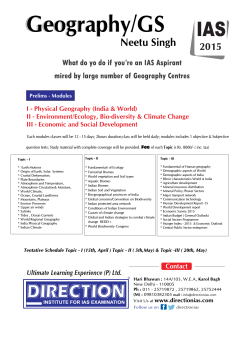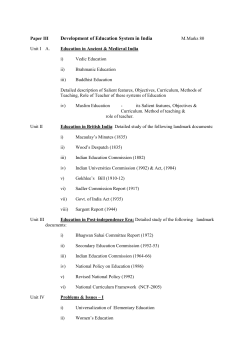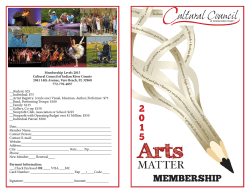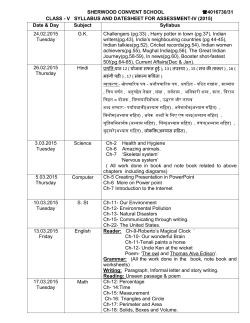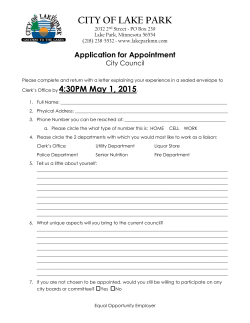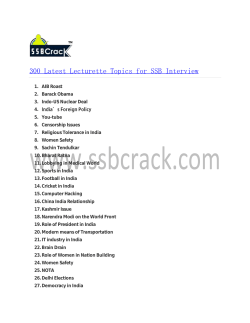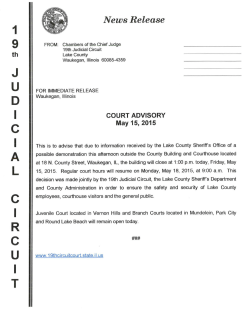
File
Advanced Placement United States History Summer Assignment 2015 Part I. Read and take notes in outline form on the first FIVE chapters of The American Pageant. Your outlines may be created in any format you choose, but they must cover all of the important information. Your outlines MUST BE HANDWRITTEN. We recommend using a pen with black ink. Outlines for each chapter should be at least two pages in length but not more than three pages. Write a 1-2 paragraph summary at the end of each outline. We have provided an example outline for the first three sections of Ch. 1, please use this as a guide. Suggested Outline Strategies: Highlight these historical terms in your OUTLINES. Why are they important and how do they fit into the context of early colonial history? 1. 2. 3. 4. 5. 6. 7. 8. 9. 10. 11. 12. 13. 14. 15. 16. 17. 18. 19. “City on a Hill” Act of Toleration (Maryland 1649) Anne Hutchinson Bacon’s Rebellion Bartolome de Las Casas Church of England Columbian Exchange Dominion of New England Dutch East India Company Elizabeth I Encomienda system Ferdinand and Isabella Fundamental Orders of Connecticut Glorious Revolution Great Awakening (First) Great Puritan Migration Half-way covenant Headright system Henry Hudson 20. 21. 22. 23. 24. 25. 26. 27. 28. 29. 30. 31. 32. 33. 34. 35. 36. 37. 38. Holy Experiment House of Burgesses Indentured servitude Iroquois (Confederacy) James Oglethorpe John Locke John Rolfe John Winthrop Jonathan Edwards King Philip’s War Leisler’s Rebellion Mayflower Compact Mercantilism Middle Passage Molasses Act Navigation Acts New England Confederation Paxton Boys Peter Zenger Trial 39. 40. 41. 42. 43. 44. 45. 46. 47. 48. 49. 50. 51. 52. 53. 54. 55. Phyllis Wheatly Powhatan (Confederacy) Primogeniture Protestant Reformation Protestant (Puritan) work ethic Regulator Movement Republicanism Roger Williams Royal Africa Company Salem Witch Trials Salutary neglect Sir Walter Raleigh Stono Rebellion Treaty of Tordesillas Triangular Trade William Bradford William Penn Part II. Map Assignment; Label and Shade the following: 1. English Colonial Regions (New England, Mid-Atlantic, Southern); Label the colonies (Virginia, Massachusetts, New Hampshire, Maryland, Connecticut, Rhode Island, Delaware, North Carolina, South Carolina, New Jersey, New York, Pennsylvania, Georgia); Shade the regions (New England, Mid-Atlantic, Southern) 2. Jamestown, St. Augustine, Plymouth Colony, Quebec, Montreal –Label 3. Regions settled by Spain, France, Russia and England (prior to 1754)-Shade the regions 4. Atlantic Ocean, Pacific Ocean, Lake Superior, Lake Michigan, Lake Erie, Lake Huron, Lake Ontario, Gulf of Mexico, Chesapeake Bay, Caribbean Sea-Label 5. Missouri River, Mississippi River, Ohio River, St. Lawrence River, Hudson River, Delaware River-Label 6. Appalachian Mountains, Rocky Mountains, Great Basin, Great Plains, Location of Bering Land Bridge, Tidewater region-Label 7. Triangle Trade Route-Label Part III. Read “The Literature of American Indian History” OR “More Than Great White Men” Answer the following questions (~1 paragraph each) You should only read one article and answer one set of questions More Than Great White Men 1. What is the focus of social historians? How does this differ from “traditional” scholarship? 2. Using multiple examples, how is social history shaped by the time periods it is written from? 3. Analyze the following quote from Jeb Bush in the reading, "American history shall be viewed as factual, not as constructed, shall be viewed as knowable, teachable and testable, and shall be defined as the creation of a new nation based largely on the universal principles stated in the Declaration of Independence." Do you agree or disagree? Why? 4. Historian James Horton described the focus of social history towards the late 1960s as an effort to “set out to analyze history ‘from the bottom up’ in order to promote a more just and democratic social order.” What is the meaning of the quote and how does it speak to the importance of social history when it comes to studying American history? The Literature of American Indian History 1. What was the early focus of American Indian history? How were these viewpoints limited? 2. How has American Indian historical understandings changed over time? Provide specific examples from the article to delineate changes within the field. 3. Re-read the paragraph about The White Man’s Indian (pages bottom 177- top 178). What have been the shortcomings of American Indian historical study? Have those issues been addressed by historians? 4. Given the reading and reflection on American Indian history, how would you classify your OWN educational experiences with native culture, tribes and ideas? Has your experiences mirrored early native history or subsequent versions of those histories? DUE: FIRST DAY OF CLASSES You will have a quiz (day 1) that covers aspects of this information. You may use your notes on this first quiz. Other Important Information: A blank map and the two articles can be accessed via Mr. Kay’s website (Google – Mr. Kay Historical Madness), Mr. Justice’s website (nbhsjustice.weebly.com) or via the Broughton AP webpage. Scanned copies of the textbook chapters will also be posted and books can be picked up from Student Services over the summer.
© Copyright 2025

